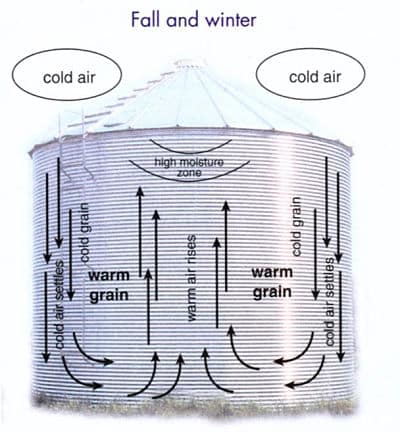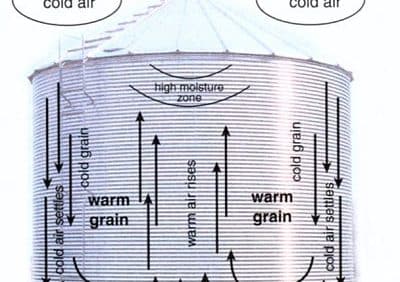
Moisture migration in a canola bin peaks when the temperature difference between inside and outside the bin is high. For example, if canola in the bin is -10C and the temperature outside is -30C, air movement inside the bin will be more active than when the difference is smaller. Same if canola in the bin is -20C and the outside air warms up for a week, which often happens this time of year.
Sometimes a quick scan of the bin roofs can provide a indicator. If most bins have snow on them, while some do not, that could be a sign that there is variation between bin temperatures. The best way to check is with temperature cables, or by removing at least one third of the canola in a bin. Probes can also work to check the top or bottom of the central core, which is where heating is most likely to begin. However, heating can also start in pockets of dockage along bin walls — where probes cannot reach.
The key is to check. While canola that is dry and cool is at lower risk, dockage and green seed can add to heating risk. Often the bins growers thought were safe are the ones that heat — perhaps because they aren’t checked as frequently as higher risk bins.

